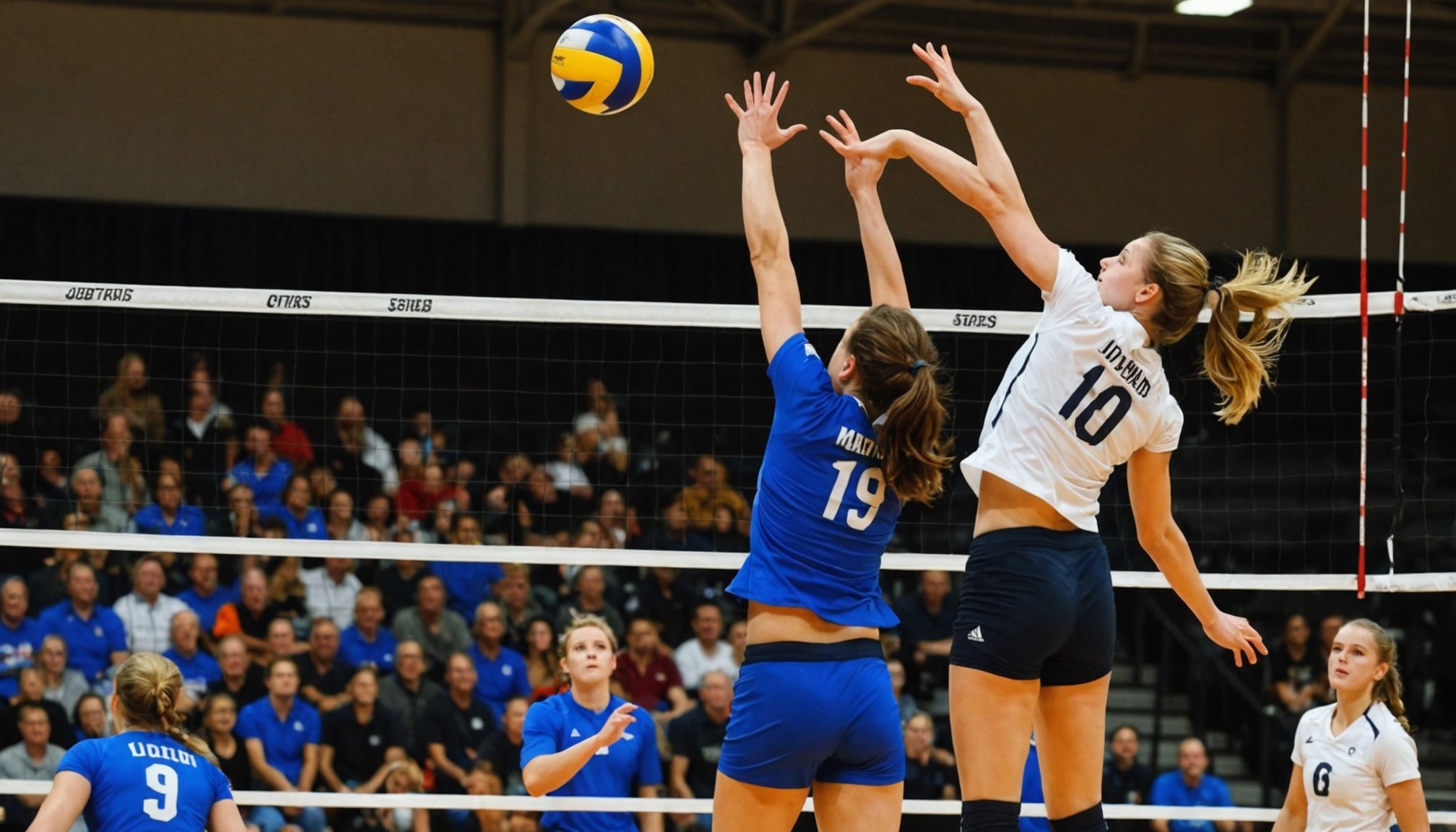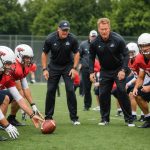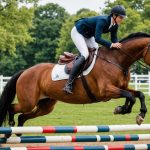Overview of Vertical Jump Mechanics
Understanding the vertical jump biomechanics involves dissecting the anatomy and physics behind it. Key muscles such as the quadriceps, calves, and gluteal muscles drive the jump. Activation begins in the calves and glutes, propelling the body upward. The quads then extend the knee, contributing significantly to the jump’s power.
Jump Height Factors
Several factors affect jump height, including technique, strength, and body coordination. The physics of jumping rely on maximizing force, speed, and muscle contraction efficiency. Greater force applied against the ground translates to higher jumps. Moreover, rapid contraction speeds are crucial for elevating height. Athletes can enhance their jumps by focusing on these factors through targeted training.
In the same genre : Maximizing athletic recovery: proven sleep techniques for optimal performance
Volleyball Jump Mechanics
In volleyball, effective jump mechanics are pivotal for success. Body positioning directly influences jump quality and landing safety. Proper alignment ensures stability and optimizes the force applied. This involves a forward lean and knee flexion, allowing for explosive upward motion. Players often work on specific drills to perfect this alignment, which enhances their performance in digs, blocks, and spikes. Implementing these strategies can lead to remarkable improvements in both jump height and overall athletic capability.
Strength Training for Improved Jump Height
Enhancing jump height requires focusing on key muscle groups such as the quadriceps, hamstrings, glutes, and calves. These muscle groups play crucial roles in generating the power needed for an explosive vertical leap. An effective strength training routine can significantly enhance these muscles’ capacity, leading to improved jump performance.
Also read : What are the benefits of high-intensity interval training (HIIT) for weight loss?
Incorporating squats and lunges into your routine can profoundly impact jump height. Squats, particularly when performed with varying weights, improve overall lower body strength, while lunges target specific muscles and enhance balance and coordination. Both exercises increase the stability and power a player needs, directly translating to improved jumping ability in volleyball.
Integrating Plyometrics into Your Training
Plyometrics for volleyball involve explosive movements that train muscles to exert maximum force in short intervals. Incorporating plyometric exercises like box jumps, jump squats, and tuck jumps can boost the explosive power necessary for high jumps. These exercises harness the speed-strength element required for volleyball, enhancing not only vertical height but also agility and quickness on the court.
Thus, balancing strength training exercises with plyometric routines ensures that athletes develop comprehensive muscle capability, leading to improved performance. Consistent practice of these routines will help players achieve higher jumps, contributing to stronger offensive and defensive plays in volleyball.
Flexibility and Mobility Routines
Improving flexibility and mobility is crucial for volleyball players aiming for optimal performance on the court. Flexibility exercises not only increase the range of motion but also contribute significantly to injury prevention, allowing athletes to execute powerful jumps and quick lateral movements confidently. Without sufficient flexibility, players might experience restricted movement, leading to inefficiencies and potential injuries during play.
Mobility drills are essential to enhance jump mechanics, ensuring players can reach their full potential in agility and explosiveness. Proper jump mechanics rely heavily on the harmonious functioning of the hips, knees, and ankles. Engaging in dynamic mobility drills helps lubricate these joints and primes them for intense activity.
Including a variety of flexibility exercises in a routine can greatly benefit volleyball jump performance. Essential stretches, such as hamstring and calf stretches, should be performed consistently to maintain elasticity and strength in key muscle groups. Dynamic stretching routines like leg swings and hip circles prepare the body for the specific demands of the sport, enhancing both flexibility and mobility.
Incorporating these exercises and drills into regular training helps athletes stay at the top of their game while significantly reducing the risk of injury, keeping the body adaptable and resilient against the physical demands of volleyball.
Drills and Practice Techniques
To enhance your volleyball skills, specifically your vertical leap, you must engage in targeted jump training drills. These drills are tailored to improve leg strength and explosive power, which are crucial for reaching greater heights.
Volleyball-specific drills such as squat jumps, box jumps, and depth jumps are excellent for increasing your vertical leap. These exercises focus on explosive movements, simulating the quick jumps required in a volleyball match. Including these drills in your routine not only builds leg strength but also improves overall agility and coordination on the court.
Incorporating jumps into volleyball practice sessions is not just beneficial but essential. Adding a set of jump training drills at the start or end of your practice can help integrate these exercises seamlessly into your routine. This ensures that your training is holistic, covering both skill and physical development.
Monitoring progress with these drills is vital to assess results and make necessary adjustments. Use a metric, like a vertical leap test, to track improvements over time. This helps identify which practice methods are effective and which need modification. Documenting your progress encourages consistent effort and helps maintain motivation by visualising tangible improvements. Keep challenging yourself to achieve those new personal bests!
Nutritional Considerations for Optimal Performance
Achieving peak athletic performance requires a well-structured performance enhancing diet. Essential nutrients for muscle recovery and growth are crucial for any athlete. Protein plays a pivotal role in muscle repair, so athletes should incorporate foods like chicken, fish, or legumes into their daily meals. Coupling this with carbohydrates, such as whole grains and fruits, helps maintain energy reserves, vital for sustained activity.
A prime focus of nutrition for athletes also includes proper hydration. Dehydration can severely impair performance, leading to early fatigue and increased injury risk. Regularly consuming water and electrolyte-rich drinks can aid in maintaining optimal hydration levels during intense sessions.
To fuel energy levels efficiently, athletes should consider planning meals around their exercise routine. Consuming a balanced meal 2-3 hours before activity ensures that energy is available when needed. Post-exercise nutrition is equally important. A combination of carbohydrates and protein shortly after exercise can expedite muscle recovery and growth.
Sometimes, supplements for jump improvement or overall performance can be beneficial. Nutritional aids like creatine or BCAAs might support energy production and muscle synthesis, but should be approached with careful consideration and ideally under professional guidance. The key is to balance diet, hydration, and proper supplementation for enhanced performance.
Psychological Aspects of Jump Performance
The importance of mental focus in sports cannot be overstated, particularly when it comes to jumping events. Athletes often harness the power of the mind to boost their physical capabilities. Key among these mental strategies is mental training for athletes, which involves exercises aimed at sharpening concentration and maintaining composure under pressure.
Sports psychology plays a critical role in optimizing performance. It explores various focus techniques that help athletes clear their minds, eliminate distractions, and hone in on their goals. For instance, one highly effective approach is visualization techniques. By envisioning successful jumps repeatedly, athletes mentally prepare their bodies to replicate those jumps in reality. This practice often leads to improved execution and builds the athlete’s confidence.
Another significant component of mental preparation is managing performance anxiety. Many athletes face nervousness and stress during games which can hinder their performance. Techniques such as deep breathing, positive self-talk, and mental rehearsal can be invaluable in calming nerves. These methods not only reduce anxiety but also enhance concentration, allowing athletes to perform at their peak.
It is clear that integrating mental training into physical training regimes can significantly benefit athletes, transforming their approach to jump performance.
Real-Life Success Stories
In the world of sports, athlete testimonials often provide insight into the real benefits of targeted training routines. One compelling example involves a professional volleyball player, Sarah, who dramatically improved her vertical leap. Initially averaging a 15-inch jump, Sarah was determined to excel in her sport. Through dedicated adherence to specialized training focused on strength and agility, she increased her jump to an impressive 23 inches over a year. Sharing her personal jump improvement story, Sarah stresses the significance of consistency and tailored exercises.
Sarah’s journey mirrors that of many other athletes who have undertaken focused regimes to enhance their performance. Personal jump improvement stories often highlight not only the physical transformation but also the psychological boost that comes with achieving incremental successes. For Sarah and her fellow volleyball players, the enhanced jump capability translated into more powerful spikes and blocks.
Such success stories reinforce the impact of a well-rounded training philosophy on jump performance. By integrating a blend of strength training, plyometrics, and flexibility exercises, athletes can witness marked improvements. These experiences underscore the importance of personalized plans that cater to individual needs, proving that with the right tools and dedication, substantial progress is attainable.
Comparison of Jump Training Methods
When evaluating jump training comparisons, several prominent programs stand out for their popularity and effectiveness. Such programs include plyometric exercises, resistance band training, and weighted jump squats. These techniques are designed to improve vertical leap and overall athletic performance.
Plyometric exercises, well-regarded for their efficacy, focus on explosive movements which enhance power and agility. They are beneficial for athletes in sports like basketball and volleyball. However, the intense bursts of energy required can sometimes lead to injury if not executed with proper form.
Resistance band training is another method gaining traction. It offers the advantage of minimal equipment and is easily adaptable to different fitness levels. Resistance bands can enhance strength and flexibility, essential components in vertical jump improvement. The primary drawback is that the progress might be slower compared to traditional weight training.
Weighted jump squats are widely acknowledged for their effectiveness in building leg strength and power. By incorporating weights, this technique intensifies muscle engagement, leading to improved muscle endurance. However, the potential for injury increases with improper technique or excessive weights.
In summary, the efficacy of jump techniques varies depending on individual goals, fitness levels, and preferences. A balanced training regimen often proves most effective, integrating various methods for optimal results.











